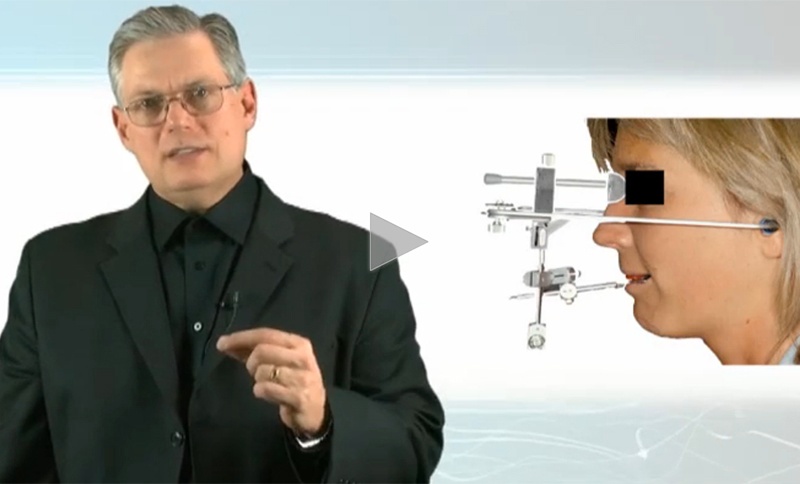The short answer is that much of the time, you don’t. A lot of great single-tooth dentistry can be done with quadrant impressions and hinge-type articulators. I was completely confounded by the need for anything else when I graduated from dental school. In fact, I sold my fully adjustable articulator with its accompanying Facebow for $150 right after I left - then regretted that decision several years later when I had a different understanding.

Why do I need to make life more complicated? Truthfully, the answer is the opposite. I can add a short step to my procedures that could save me a lot of time when I deliver the final restorations.
There are basically two kinds of facebows: kinematic and arbitrary. Kinematic facebows are used to locate terminal hinge axis of condylar rotation. An arbitrary facebow, called the earbow, uses the ear canal as a locating point.
Pantographs are kinematic facebows that also include a recording device so that the exact condylar movements can be programmed into a fully adjustable articulator. They are complex and difficult to use and master. Arbitrary facebows sacrifice some degree of accuracy for simplicity, although the necessity of that accuracy is disputed in the literature.
At Spear, we use the earbow simply because there is no need to complicate dentistry and make it harder than it already is. We also use a semi-adjustable articulator rather than a fully adjustable instrument for the same reasons.

The purpose of the articulator is to relate the upper and lower models together when the casts are mounted in a seated condylar position.

The purpose of the facebow is to orient the upper model in three dimensions relative to the rotational axis of the condyle. The end result is the ability to move the articulated casts in a way that mimics as closely as possible the movements of the condyle in the fossa. Why would that be so important if I can do single units with a hinge instrument? If the purpose of the facebow and articulator is to create accurate movements, then the representation of the condylar position is important. One of the important movements the facebow helps to recreate is the arc of opening and closing, represented by the red arc below.

The hinge articulator changes the position of the condyles relative to the upper arch and then completely changes the arc of opening and closing of the mandible. The end result can be restorations that need significant adjustment to make them work with the patient's bite. Not only does it change the bite in opening and closing, but also in excursive movements (green circles and lines).


The total time to capture a facebow is less than five minutes, and especially when doing the last teeth in the arch or multiple teeth, can save considerable time and even remakes at restorative delivery. The additional benefit of the facebow is that it orients the upper cast to the horizon. This is especially important in doing anterior teeth and making sure the incisal edges are placed properly.
If an accurately recorded facebow is utilized to mount upper casts, the dentist and technician will be able to assess any cant or occlusal plane irregularity relative to the horizontal plane. While the concepts may seem complex, the reality is that using a facebow with a semi-adjustable articulator will ultimately save you time, money and help improve patient satisfaction.
(Click this link for more dentistry articles by Dr. Steve Ratcliff.)
Steve Ratcliff, D.D.S., M.S., Spear Faculty and Contributing Author
FREE COURSE: Facebow Transfer
Now that you've read about fabricating the protrusive record, ensure you deliver the correct information with a facebow transfer. In this free course, you'll learn rationale behind the facebow, the differences in types of facebows and more.
WATCH NOW